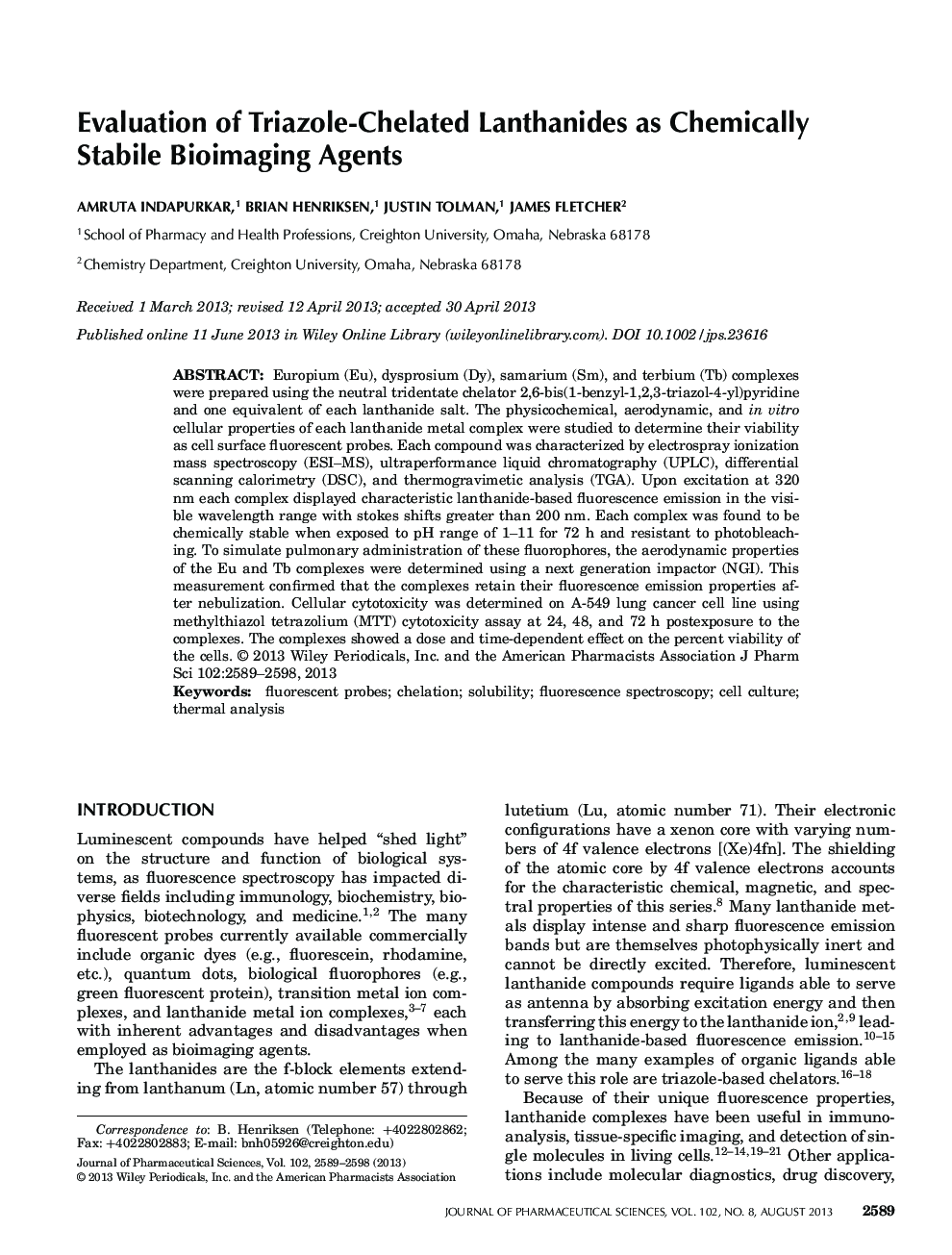| Article ID | Journal | Published Year | Pages | File Type |
|---|---|---|---|---|
| 10162688 | Journal of Pharmaceutical Sciences | 2013 | 10 Pages |
Abstract
Europium (Eu), dysprosium (Dy), samarium (Sm), and terbium (Tb) complexes were prepared using the neutral tridentate chelator 2,6-bis(1-benzyl-1,2,3-triazol-4-yl)pyridine and one equivalent of each lanthanide salt. The physicochemical, aerodynamic, and in vitro cellular properties of each lanthanide metal complex were studied to determine their viability as cell surface fluorescent probes. Each compound was characterized by electrospray ionization mass spectroscopy (ESI-MS), ultraperformance liquid chromatography (UPLC), differential scanning calorimetry (DSC), and thermogravimetic analysis (TGA). Upon excitation at 320Â nm each complex displayed characteristic lanthanide-based fluorescence emission in the visible wavelength range with stokes shifts greater than 200Â nm. Each complex was found to be chemically stable when exposed to pH range of 1-11 for 72Â h and resistant to photobleaching. To simulate pulmonary administration of these fluorophores, the aerodynamic properties of the Eu and Tb complexes were determined using a next generation impactor (NGI). This measurement confirmed that the complexes retain their fluorescence emission properties after nebulization. Cellular cytotoxicity was determined on A-549 lung cancer cell line using methylthiazol tetrazolium (MTT) cytotoxicity assay at 24, 48, and 72Â h postexposure to the complexes. The complexes showed a dose and time-dependent effect on the percent viability of the cells. © 2013 Wiley Periodicals, Inc. and the American Pharmacists Association J Pharm Sci 102:2589-2598, 2013
Related Topics
Health Sciences
Pharmacology, Toxicology and Pharmaceutical Science
Drug Discovery
Authors
Amruta Indapurkar, Brian Henriksen, Justin Tolman, James Fletcher,
